Earth History: The Himalayas as a Key to Understanding
Historically, mankind has cycled through many theories to explain observations of the universe. For example, going from a geocentric model where all things revolve around Earth to a steady-state eternal universe to the Big Bang. Today, we are all but convinced that we have finally found the answer.
The same can be said of many similar areas of scientific research. Geologically, the Earth's history is equally mysterious. In the way that we speak, we claim that our current established models are absolute while admitting them to be theoretical. This is largely due to the dominance of particular theories and of the suppression of others.
For example, the "Big Bang" has became so popular and well-known that this very fact has become one of its strongest defenses. The whole world is working on furthering it, after all, or so it would seem. This theory came about due to a specific observation made in the 1920's and 1930's. No other interpretation was presented, and thus the "Big Bang" became accepted. Then, it was off to the races. It has not made it to the finish line yet, but it has been as if it is the only interpretation in the race.
Without a counter viewpoint, arguments become completely one-sided and unbalanced. Flaws and critical issues do not get addressed as they would in a debate, but rather they are able to just be ignored. As the "Big Bang" interpretation continues to be fed by research worldwide, the certainty of its accuracy seems all but validated without giving heed to the anomalies.
The same is the case for Plate Tectonics. How many people are aware of opposing concepts of how the Earth formed? When a scientist speaks of the concept of "Plate Tectonics", do they speak as if it is a question or a fact? In much the same way, "Plate Tectonics" is presented to society at large as if it is a known fact.
Earth: The Curious Case of the Himalayas and Indonesia
According to Plate Tectonic theory, the Himalayas were created by India crashing into Asia and pushing up the mountain range through subduction of the Indian plate under the Asian plate. Similarly, Indonesia is said to be the result of subduction. Essentially everything we see is waved away simply by throwing "subduction" at it, in plate tectonics.
However, if India crashed into Asia, then why did it create a mountain range in an opposing arc shape?
The Himalayas are distinctly in an arc shape. This is a common shape on Earth. In fact, if we look around the Earth, we can find several cases of arcs. Typically, they are formed in the ocean in what is known as an island arc.
The plate tectonic explanation for this arc is that the Indian plate is arced in this manner. This is depicted in the plate outlines shown in the oceanic crustal age map here:
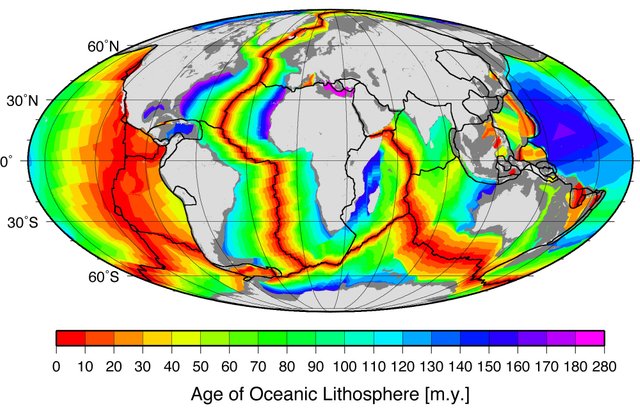
Source
As is shown, the Indian plate itself is conveniently arced so as to produce this arcing mountain range. However, there are several questions that immediately arise from this analysis. Why, then, is there a second plate that just so happens to be east of India creating a second portion of the arcing Himalayas after a gap?
This is extremely unlikely to happen by chance. However, the plate tectonic explanation cannot describe why the Himalayas mountain chain is broken apart and thus claims that there is no plate subduction between these two areas.
Looking around the Earth, there are many arc-shaped formations:
From Google Earth
The Indonesian archipelago is also formed in an arc:
From Google Earth
Arcs are distinctly the results of waves, as they are in the shape of waves from a focal point. In fact, if we look at the Figure between Antarctica and South America, we can see evidence that this arc was created by a shockwave caused when the two continents separated. Both continents point in the direction of the arc and the energy released left trails on the northern and southern side as it literally created the arc islands to the east. These were thus formed in the presence of water, a necessary component in the formation of volcanoes. Without sufficient water present, steam cannot be created and thereby a formation is only a mountain and not a volcano. With water present in its formation, a structure becomes highly likely to be volcanic. Moreover, they were formed suddenly and rapidly due to the shockwave created from separation.
The entire Malay Archipelago of which Indonesia is part is largely volcanic, as are most arc formations:
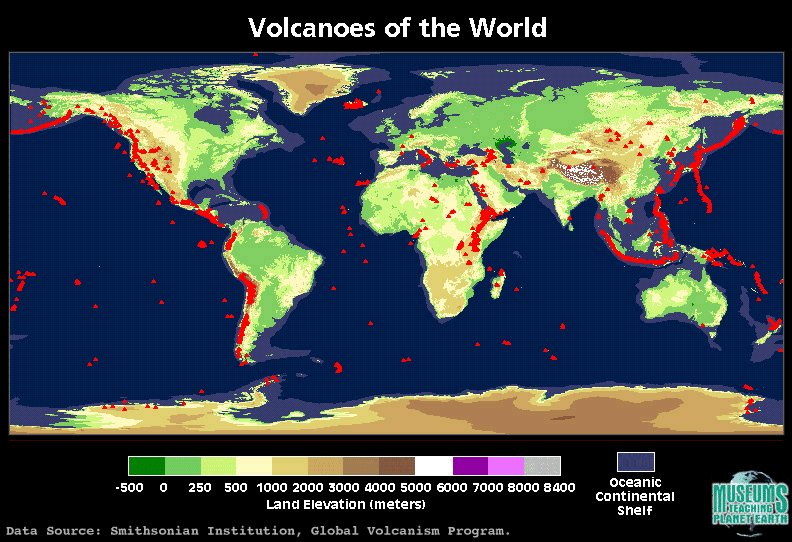
Source
So in short, what is happening?
Distinctly, the Himalayas are not formed by a plate subducting because their focal point is in the opposite direction of India. Instead, if we follow the Himalayas towards a focal point we can see it may be related to the oceanic rift which ended north of Russia:
From Google Earth
This is why there is a gap in the Himalayas arc: because the sudden creation of them had a weak point where they literally spilled down onto the southern land, shown again here:
From Google Earth
For the Indonesian Archipelago, its focal point appears to be where Asia and North America seem to have ripped apart:
From Google Earth
This is because the Earth expanded. It once had a physically smaller outer surface, but it built up energy. This likely occurred due to a change in its state from non-rotating alike to Venus to rotation as Earth does, which produced an electromagnetic field. As a result of this, energy built up until the planet reached an activation energy for change. And then the change proceeded quickly, spontaneously, and catastrophically. The crust broke along the so-called continental crust margins releasing shockwaves of energy and then the pressure built up was able to be released as the Earth rapidly grew to a new steady-state. As a result, what we see today is much more stable and unchanging. This process is not continuous, slow, and steady but rather is rapid and sudden like any other reaction once sufficient activation energy has been input, literally creating the oceans in the process.
Moreover, this is why the Pacific Ocean is much more volcanically active, home of the "Ring of Fire": because this is where the Earth shattered, as is evidenced by the apparent oceanic crust age:
Source
The Expanding Earth model may be scoffed at as pseudoscience, but this is just a way to belittle an idea without addressing its merits. When a model in science gains the upper-hand, and becomes widely accepted, it quickly loses any need to actually rebut arguments of other models. And yet the arguments remain. The Earth could not just arbitrarily fit together into a smaller globe without oceans if it were not actually this way. The jig-saw puzzle of the Earth fitting together on a smaller globe is very difficult to refute. The argument of "how?" is insufficient to disprove the model. Just because a mechanism is not understood to explain how something happened does not mean that it did not happen.
The Curious Case of the Canary Islands and Cape Verde
The Canary Islands and Cape Verde off the west coast of Africa are volcanic, meaning they formed in the presence of water. If we look closely at Africa itself, we can see exactly how they were formed. Starting from a large view of western Africa:
When we zoom in, we see evident flow channels of massive flooding that occurred in the area where the water ran off into the ocean at the two island chains, leaving behind sediment which literally created the islands:
From Bing Maps
These are all signs of sudden and rapid change and not results of millions of years of "plate tectonics." It is important to note that we assume constant rates of radioactive decay when using radiometric dating. However, if the Earth went through such a drastic change, we cannot reliably use this form of dating as an absolute metric.
Of course, there is much more to this. However, plate tectonics requires a slow and steady process and Earth clearly did not change in a slow and steady process. Moreover, no other planet or moon exhibits plate tectonic characteristics. There is no reason that the Earth would be "special" functioning under its own unique mechanics. Rather, the surface of Earth was much more like Mercury and Venus--a single land-mass--until the crust shattered from internal pressure, releasing water and creating continents, mountains, and most features of Earth we see today.
For More Information
If you'd like to read more, check out my other Steemit posts. Also, this is largely built on physics, philosophy, and an extensive study of many aspects of reality that I write about in my book, The Instruction Manual: As It Is Written In the Cosmos which I read in this YouTube playlist.
Thanks for reading!
-Steve Scully
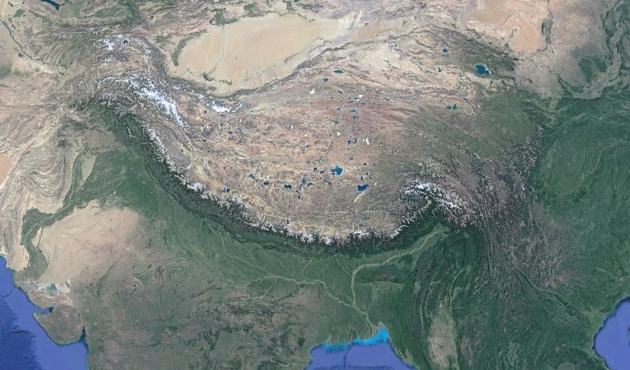
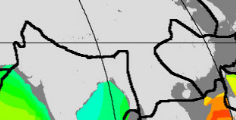
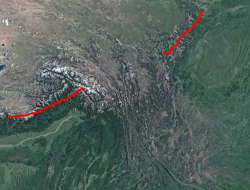
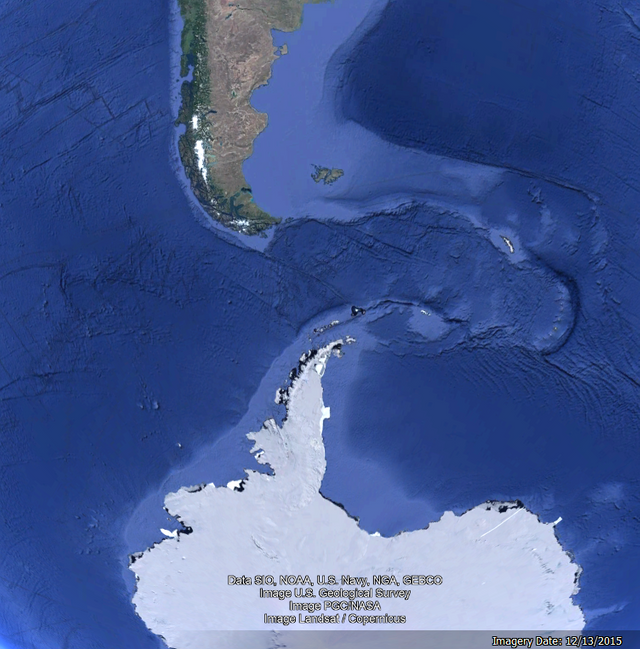
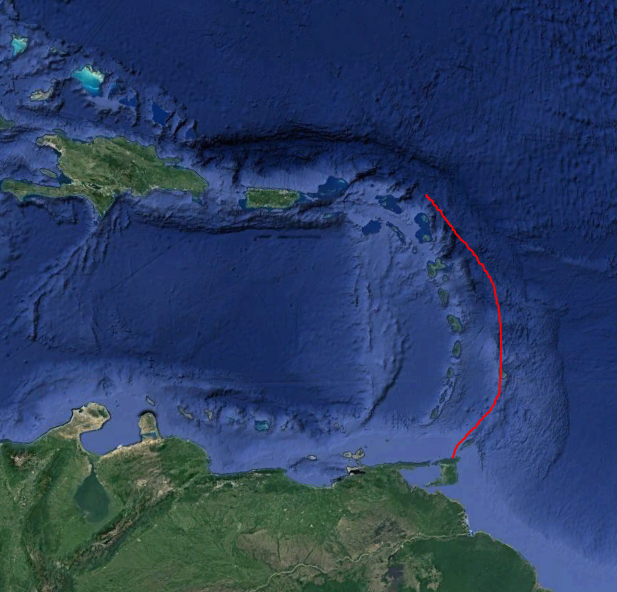
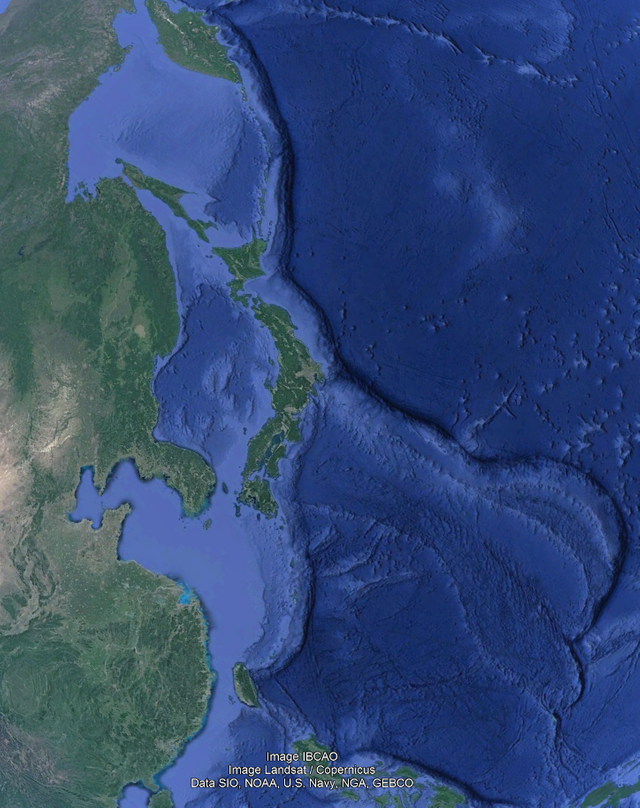
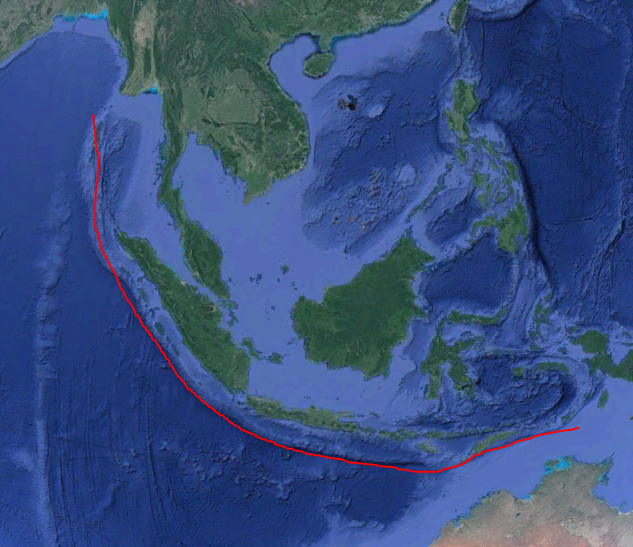
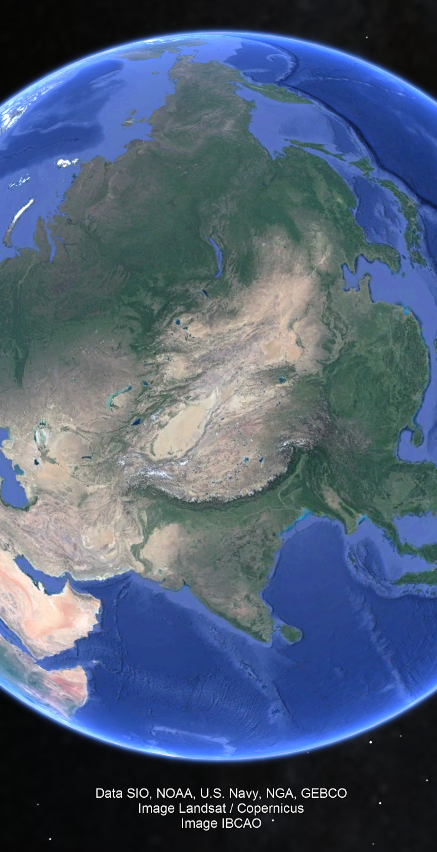
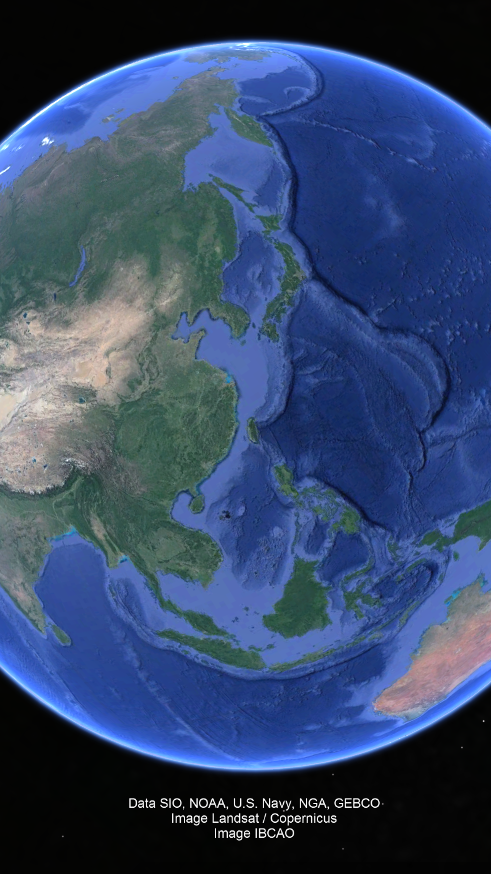
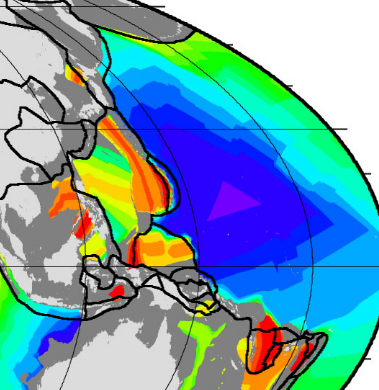
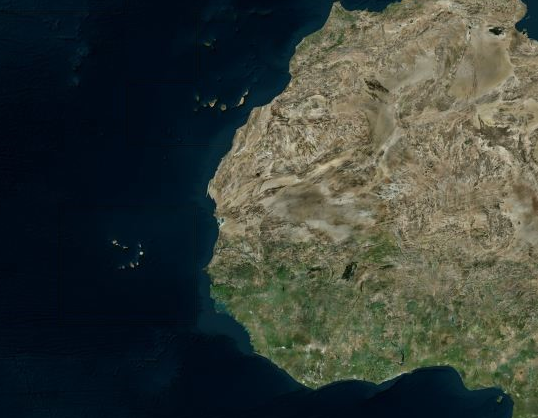
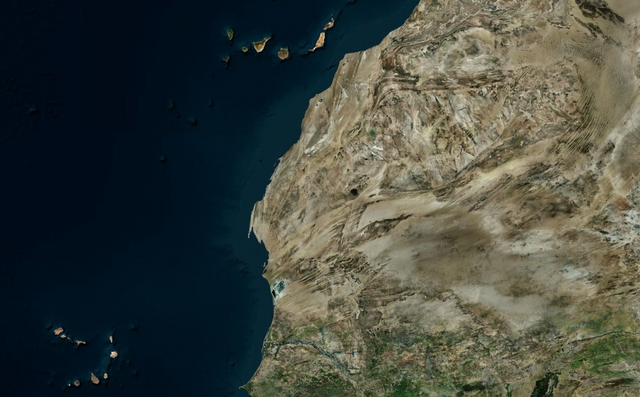
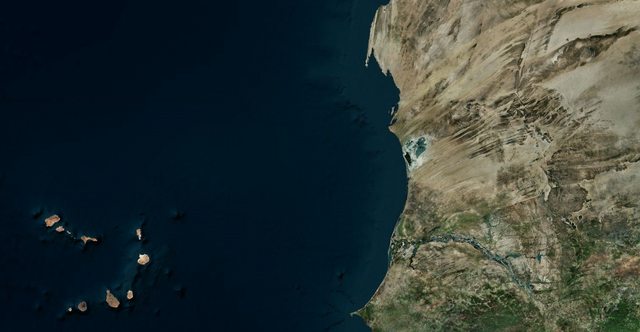
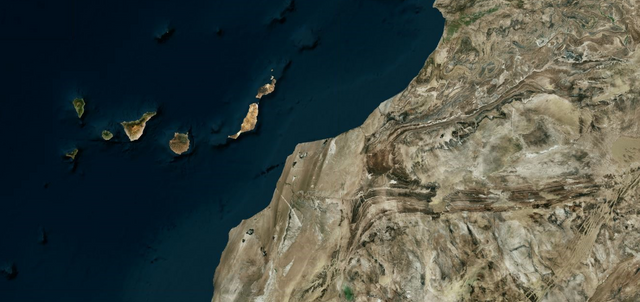
I'd be interested in what you think of Carlson.
I think he might be right on the money with the recurring 'earth apocalypse' every 12/15,000 years...
Hi Andrew! I have listened to all the JRE podcasts with Randall Carlson and several of his other posts around the internet. He is certainly extremely knowledgeable and a great source. However, I do not believe that he is interpreting the mechanism that caused the change appropriately. It is a very complex subject, because there are many nuances of detail.
Firstly, he accepts radiometric dating as a valid metric. While the dating since ~12,000 years ago may be generally accurate'ish, I firmly believe that there is a very large assumption that the Earth has not undergone any drastic change that may cause dating prior to this "event" to be substantially miscalculated in absolute senses.
This is because of the second most important thing he does not include in his considerations, nor most models out there: the Earth expanded. This is not a question, but rather is only a matter of what exactly happened in the process. Plate tectonics is a complete misinterpretation that, when included in any explanation for the history of Earth, utterly misleads every other aspect of the model. The question of "how" is a matter of physics, which is a very detailed answer that all I can do is suggest you to look carefully through my other posts here and consider checking out my book (audio linked above).
This is extremely important when it comes to Carlson's work. As he interprets the Earth to be extremely old, billions of years as per radiometric dating analysis, he is open to there being a vast number of impacts as well as a high probability of impacts across its history. However, if one is not so certain of the radiometric dating process, then they will not hold it as an absolute but rather as something of note. This opens the door to the possibility that a catastrophic event, particularly one linked to what Randall Carlson discusses, produced a drastic change in the rate of radioactive decay and made it appear as if the Earth's age was much older when basing it off the present radioactive decay rates. It is an assumption that this is the case, however.
When the Earth is considered to possibility be younger than claimed by radiometric dating, then the question of the frequency of impacts comes into play. They do not occur frequently and with a much shorter span of time for them to occur within the probability becomes much lower. So much lower that all impact craters are questionable. I literally just finished writing a follow-up article on impact craters, The Not-So Impact Craters.
My personal interpretation, which is hard to explain the details of why it is the case in a short comment, is that the Earth was physically smaller and it had more energy (mass) into it than it was releasing. This led to a buildup that led to the sudden and rapid transformation of Earth when sufficient activation energy was input. The crust of the Earth then literally shattered along the edges of what we call the continental crust and then the Earth was free to expand outward to a new steady-state. As it did this, the oceanic floor was produced and water which was built up due to being literally created inside of the Earth (where an electromagnetic field merges, it is composed of particles that combine and fuse into larger particles such as hydrogen and oxygen) was released. This water then flooded across the planet, as well as Earth shattering earthquakes rippling through the crust. This produced mountains and all the features we see on the globe today, while moving continents into new positions where they then became stable as the oceanic floor was created and their positions became largely locked once more as the water then receded to the newly created ocean basins.
This is therefore not repetitive. Carlson interprets the impact as melting the glaciers and causing flooding, but in reality the massive flooding is even beyond his interpretations because he is not thinking globally enough. That is why I point to the Himalayas and Indonesia being literally created in this sudden event. In fact, all mountain ranges we see today are related. The Rockies, Appalachians, Andes, Himalayan; they were all caused by this event. It is no accident that the Rockies and Andes are along the Pacific Ocean, and the Ring of Fire surrounding it. This is where the Earth shattering epicenter occurred, sending out shockwaves creating deep trenches, volcanic arcs, and so on.
Carolina Bays also were caused due to water runoff after the Appalachian mountains were formed which is why the bays are all angled specifically in the direction from the Appalachian towards the ocean (Northwest to Southeast along the eastern coast of the US and North to South as they approach and cross Florida).
Physics is my "expertise", but unless we start from the Expanding Earth geology will remain completely off-base.
In my interpretation, Randall Carlson is extremely knowledgeable and I believe he would change his perspective if he gave these particulars, and the physics of the Expanding Earth, more rigorous consideration. I suspect most of these concepts have simply not occurred to him or crossed his path, so he considers a comet impact to be the most likely culprit of what he recognizes occurred: massive flooding and extinction and reverting the human race "back to the stone age".
I do love him, he's a great source. I am sure I am wrong in places, but understanding is a process that comes with time, focus, and consideration to as many possibilities as we are able to expose ourselves to.
All one has to do is view the moon and comet type debris impact becomes the first likely guess.
But I'll bite. Please, if you don't mind, tell me how old you believe the earth to be?
It's a long story. My interpretation is that the solar system is a planetary factory, where a planet starts off as the first planet from the sun alike to Mercury, then it planetary supernovas and moves into the second position while shoving the second planet into the third, the third into the fourth, and the fourth into the asteroid belt where Ceres is, and a new planet forming near the sun later.
If you are interested in the particular reasoning, this article is focused on specifically the reason why a Mercury planetary supernova would literally and completely fulfill a vast array of prophecies and this follow-up article is about the specific observations of the planets that show this to have arguably happened in the past.
When it comes to the moon, the concept is that:
The effect on the second planet, due to the thick atmosphere, in some way produces debris stuck in orbital about the second planet which then coalesces into a moon, cratering in the process.
This is a process that repeats itself across several thousands of years, and is closely tied to the state of humanity upon the third planet. In the process of changing from Mercury to Venus to Earth, a planet will resurface itself substantially twice. First it will form alike to Mercury, then it will supernova (Venus was completely resurfaced in a single "planetary supervolcano" event), then it will have its atmosphere stripped away and begin to rotate in the process (which causes an electromagnetic field to be created). At that point, the planet is imbalanced and has more energy input than output due to its newly formed electromagnetic field, and so it builts up pressure until it bursts in the Earth shattering earthquake that causes the global "great flood" of all the stories, then it reaches a new steady-state as Earth is now, and society either comes together and becomes unified under God (The All--God is Everything, there is nothing but God) by taking action that is for ALL, or continues to choose portions of All over The All (which is idolatry in all its forms, and the cause of chaos in life) and faces the next "Judgment Day"--planetary supernova of Mercury, which is where we stand now. There is a lot to it, and explaining it in a comment or even a relatively short article on here does not do justice to the extensive reasoning that has brought me to consider this and see it as the most likely accurate interpretation of what is happening in our solar system.
I know that is hard to believe, but I am just doing my best to answer your question. I certainly don't have every little detail worked out, but I do have an extremely detailed physics model that explains why the universe is infinite, and that all things function the same. These conclusions above only come after an in-depth understanding of fundamentals of physics entered my life, I would certainly not have believed any of it if someone just proposed it to me. Alas, I am just being honest and trying to answer your question. So there's that.
It's an interesting theology.
You didn't, however, answer my question. I'll ask again, how old is the earth (precisely as possible) according to the cosmology you've constructed?
You did answer the age of the universe question, I think, in that you believe the universe to be an infinite continuum, or something close to that.
So the earth? 6000 years old? 60,000? 600,000? 6,000,000,000?6,000,000,000,000?
I'm open to reading peoples alternate cosmologies, but there are hundreds and thousands of them: ask Michael Shermer:) Here is one of those hundreds of thousands:
https://www.minds.com/blog/view/795656570510049280
So I'm not being disrespectful in my query.
I did say: "This is a process that repeats itself across several thousands of years". I don't have a specific date, but only an order of magnitude. Something in the range of ~25,000 years or less due to it being also in the first and second planetary position phases, where it is still a planet just not as we see it today. Our planet being in the third position is likely much shorter, and I wouldn't be opposed to the possibility of 6,000 years though I am also open to longer ranges if the evidence leads that way. There is a lot to it and evidence can take us away from an interpretation when it may just be misunderstood and so typically I just say "????" when something seems to oppose the biblical interpretation and keep the observations in mind as I keep considering rather than completely abandoning the biblical interpretation as "disproven" by something altogether.
So, for sure not millions or billions of years old. These ranges of dates come from radiometric dating which is a fundamentally flawed process. At best, it is good at showing relative dates but the absolute dates it produces are completely invalid due to the vast array of assumptions being made as I mentioned previously.
I grew up atheist, so I am well acquainted with the philosophy. I would argue that radiometric dating was not sufficiently critically analyzed for its holes or flaws because people literally wanted to prove the bible (and similar interpretations) to be wrong and random chance across billions of years to have a basis. The universe works in funny ways; when we want to believe something sufficiently, even if it is wrong, it can give us the evidence to believe it. Those looking at radiometric dating saw a means to do so and latched onto it and propagated the concepts all while disregarding its extreme weaknesses. The oldest rocks on Earth are still the oldest, in my interpretation from a "Mercury phase", but the actual date of their formation based off radiometric dating does not appreciate that they could have gone through drastic environmental changes. Radiometric dating, from a physics standpoint, depends on the environment because radioactive decay is a function of the environment. If the environment changed substantially, the rate of decay likely changed substantially as well. Regardless of what science may claim, their claims are based on invalid models built on approximations rather than recognition of the infinite nature of the universe.
I would say you are on the scientific fringe. This theory implies that so much science is wrong and what you are proposing comes close to FE theory in its radicalness. The problem with this is how we got technology to work so well and be so advanced if all the science behind it is false.
But, I too am a theist although I argue for a secular humanist societal substrate as I don't want the Noahide Laws to be the end of my head:).
Here is what I believe as an Agnostic Gnostic:
-the earth is an oblate spheroid within a 15. billion-year-old universe (give or take).
-natural selection is an evolutionary fact.
-non-biological evolution is much more speculative.
-it's the worst idea ever to transfer billions of tons of C)2 from the earth to the atmosphere.
-that we live in an incredibly sophisticated simulation.
-that humans are not the only players on this earth.
-I consider my theism rational although speculative.
-I'm the least religious person one can meet!
-I have an unquenchable penchant for seeking truth and justice throughout my life and won't settle for anything that smells like B.S. This odd character trait has cost me dearly but it's been worth it.
I've suggested the world needs a new type of university dedicated to reexamining our spiritual heritage and a part of that academy should be exploring alternate cosmologies and theories.
Like I said, I can't explain it in a short comment--I've written an entire book on the subject. Regardless, yes--much of scientific interpretation of observations is unequivocally wrong.
The question of how we got so much to work technologically is because we have 1) observations that are basis for technology, and 2) very good approximations of how systems work within narrow bands of infinity.
For example, if someone recognizes electricity, they do not need to fundamentally understand it mechanically to use it technologically. They can grasp enough principles (conduction and insulation, voltage, etc.) to apply those understandings to create a device that uses electricity without ever actually having any grasp of what is actually happening.
This is a common misunderstanding; where the power of the observation itself is considered trivial whereas the interpretation of that observation is considered the true cause of technological advancement. This is not typically the case. Even when our interpretation leads to extrapolation that leads to technology, this is due to improving our approximate descriptions of the systems we are focused on to a degree where the approximation can be applied to a decipher other characteristics that are also related. Still, all models in physics are approximations that fall apart beyond a certain range of observations because they are not actual, real, tangible descriptions of what is but are precisely approximations.
What I have proposed above is perhaps the last thing I would talk about typically, as the order of operations is important. Starting at the end is not easy, I was just answering. "Fringe" is a matter of perspective. The Big Bang is as fringe as can be, a complete and utter non-reality that in no way describes any aspect of the nature of reality nor the actual mechanisms behind the observations it aims to utilize as its basis. From a purely philosophical standpoint, there is no difference between a 1 day old universe, a 6,000 year old universe, or a 15 billion year old universe. They are all nothing next to an eternal universe. Moreover, time is observer dependent and 15 billion years in our perception is an instant in another observer's and vice versa. Alas.
Thanks for sharing your take. For the record, I am not "religious". I just know God, and know God to be in everything--including the Bible. There is truth everywhere. These issues are not so simple, I do not in any way agree with human-based global warming. It is not remotely scientific. It is as if we understand how the universe functions exactly, when we do not. The truth is that it is an attempt to brainwash the general public to accept their own enslavement through further means of taxation and oppression by convincing enough people that "it is your fault" and "we will fix it, just pay us." Regarding natural selection, I wouldn't call something which science admits to be a theory "fact". When science knows it can't even call something that it wants to call a "fact", and has to admit it to be a "theory", its not due to lack of recognition of it as a fact. It's due to anomalies that simply cannot be overcome. However, that doesn't stop people from speaking of the theory as if it is factual and presenting their belief system into the mix while never addressing the anomalies.